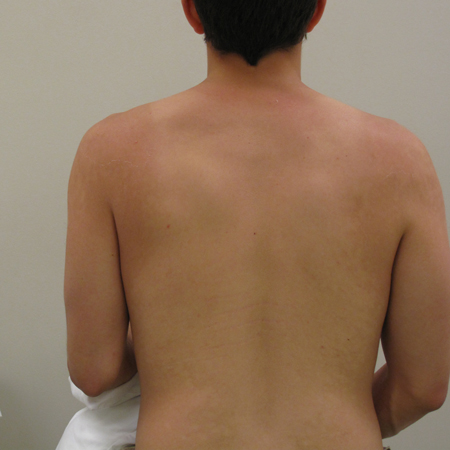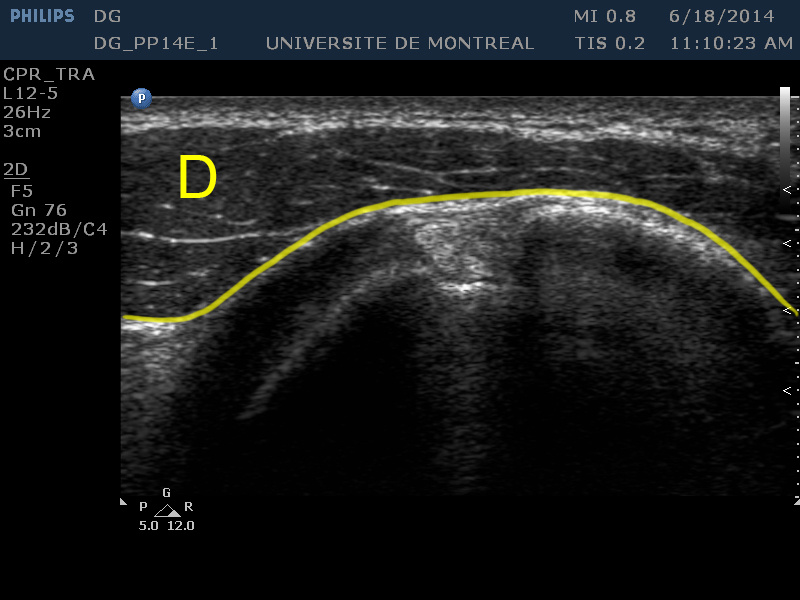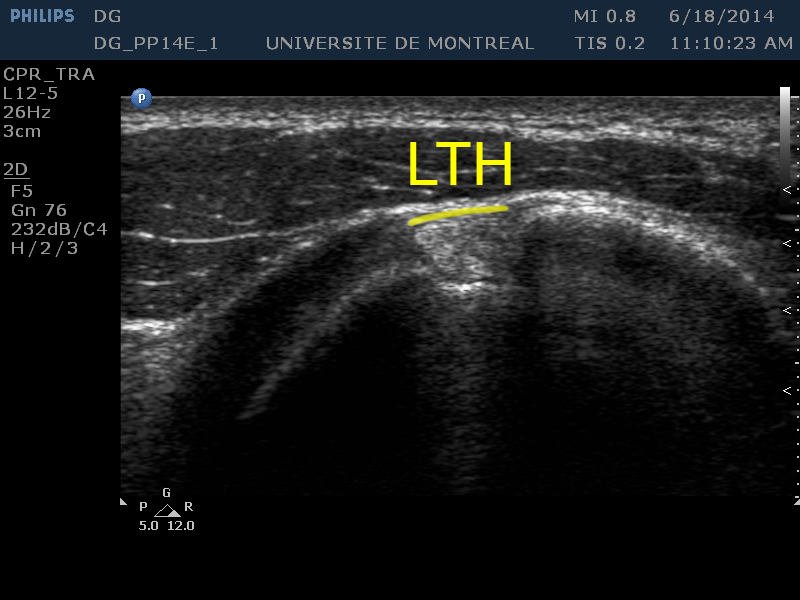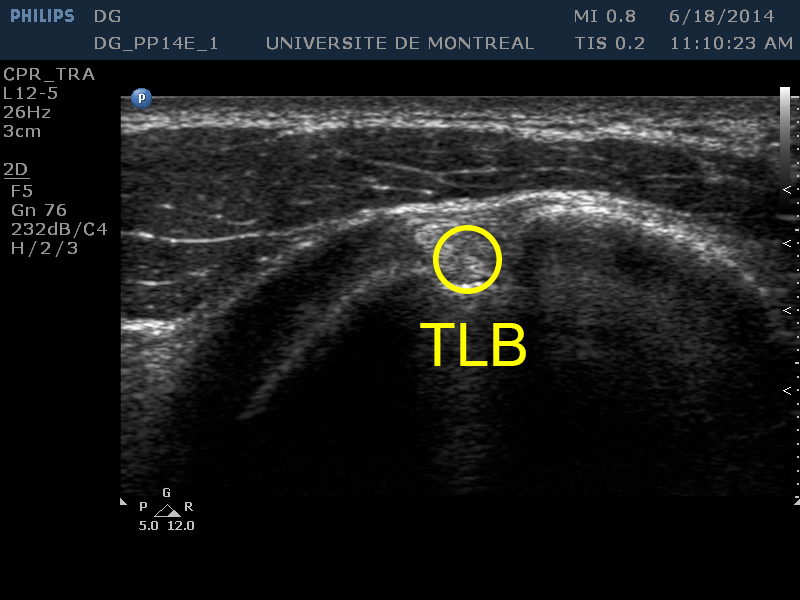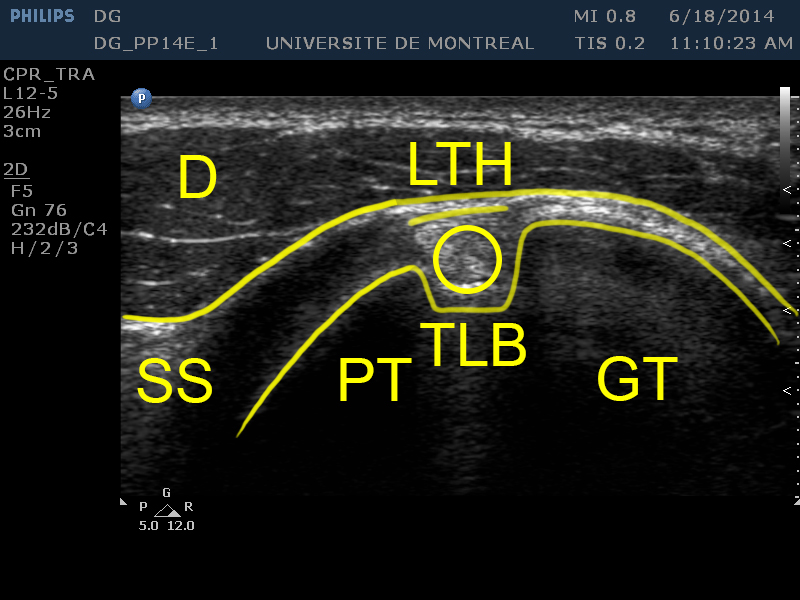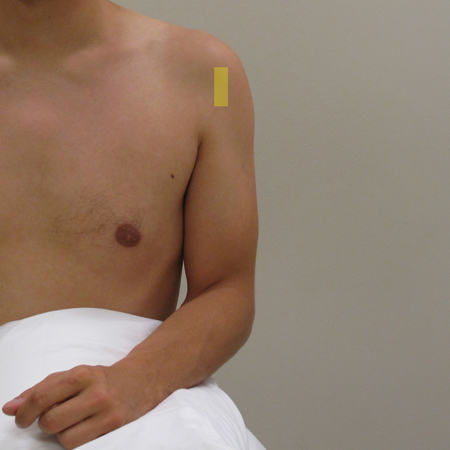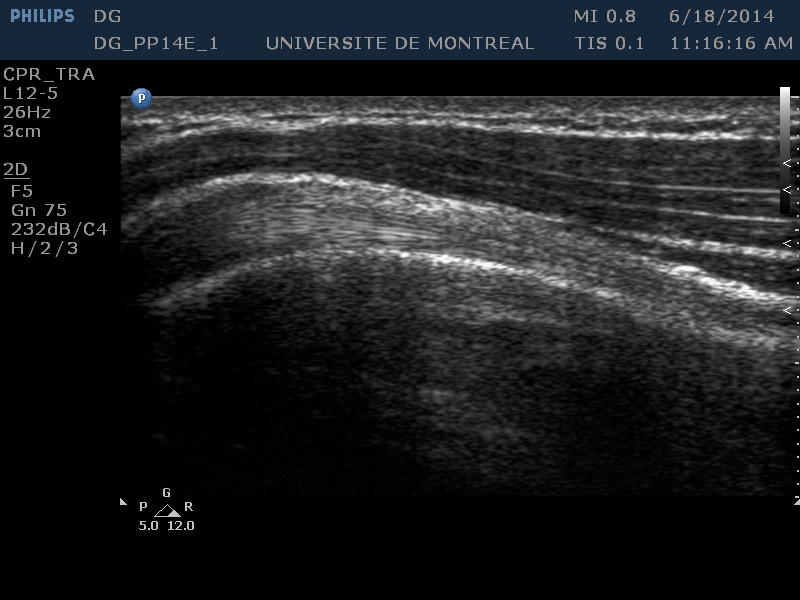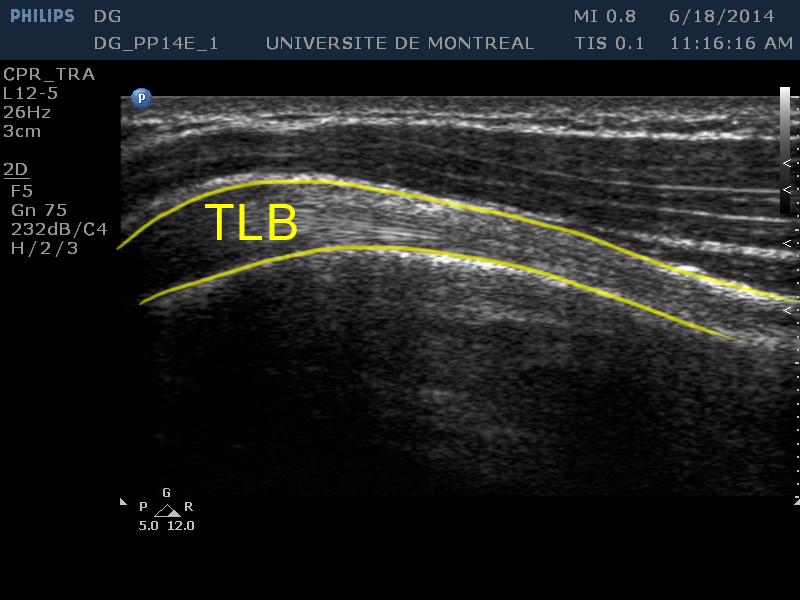Biceps Brachii
Biceps Brachii
1.
The Basics
| Muscle Type | Biarticular, digastric | |
|---|---|---|
| Origin | Long head | Supraglenoid tubercle (scapula) |
| Short head | Apex of the coracoid process (scapula) | |
| Common insertion | Bicipital tuberosity (radius) | |
| Innervation | Musculocutaneous nerve (C5-C6) | |
2.
Descriptive Anatomy
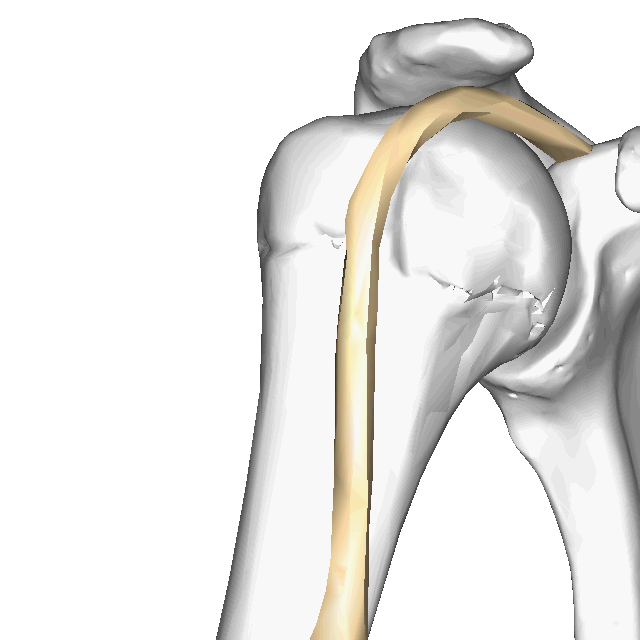
The proximal portion of the tendon of the long head of the biceps is situated inside the joint and is within the synovial membrane of the glenohumeral joint. This tendon goes distally through the bicipital groove formed between the lesser tuberosity and greater tuberosity respectively located on the anterior and lateral portions of the head of the humerus.
The synovial sheath of the glenohumeral joint continues 3-4cm distally to the inferior extremity of the bicipital groove and makes contact with the sheath of the long biceps. This proximity explains the frequent relation between the symptoms/affections of the tendon of the long biceps and the glenohumeral joint.
The tendon of the long biceps has a curvilinear path du to its origin situated medially relatively to its muscle belly. Because of this path the tendon has an inherent tendency to move towards the midline, especially during a powerful contraction. The transverse humeral ligament covers the bicipital groove forming a osteofibrous channel that reduces the likelihood of the tendon to move medially. The rotator interval is the name given to the space separating the subscapular tendon and the supraspinatus tendon. It contains the tendon of the long biceps, the coracohumeral ligament and the superior glenohumeral ligament. These structures work together to maintain the tendon of the long biceps in place within the bicipital groove.
Unlike its counterpart, the tendon of the short biceps reaches its origin without going through the glenohumeral articulation and is thus rarely involved in shoulder disorders (Bianchi, 2007).
The subacromial space is delimited by the coracoacromial arch and the head of the humerus. This space contains the tendons of the rotator cuff, the tendon of the long biceps and the subacromial-subdeltoid bursa

BodyParts3D © The Database Center for Life Science licensed under CC Attribution-Share Alike 2.1 Japan
The synovial sheath of the glenohumeral joint continues 3-4cm distally to the inferior extremity of the bicipital groove and makes contact with the sheath of the long biceps. This proximity explains the frequent relation between the symptoms/affections of the tendon of the long biceps and the glenohumeral joint.
The tendon of the long biceps has a curvilinear path du to its origin situated medially relatively to its muscle belly. Because of this path the tendon has an inherent tendency to move towards the midline, especially during a powerful contraction. The transverse humeral ligament covers the bicipital groove forming a osteofibrous channel that reduces the likelihood of the tendon to move medially. The rotator interval is the name given to the space separating the subscapular tendon and the supraspinatus tendon. It contains the tendon of the long biceps, the coracohumeral ligament and the superior glenohumeral ligament. These structures work together to maintain the tendon of the long biceps in place within the bicipital groove.
Unlike its counterpart, the tendon of the short biceps reaches its origin without going through the glenohumeral articulation and is thus rarely involved in shoulder disorders (Bianchi, 2007).
The subacromial space is delimited by the coracoacromial arch and the head of the humerus. This space contains the tendons of the rotator cuff, the tendon of the long biceps and the subacromial-subdeltoid bursa
3.
Technique
3.1.
Positionning the Subject
- Sitting with bare shoulder
- Shoulder :
- Neutral flexion - abduction
- A slight external rotation can help center the structures on the screen
- Elbow :
- 90° flexion
- Full supination
3.2.
Finding the structures & palpation
- The tendon of the long biceps is located in the bicipital groove
- The bicipital groove is between the the lesser tuberosity and greater tuberosity respectively located on the anterior and lateral portions of the head of the humerus
3.3.
Transverse Plane
Objectives :
- Evaluation of the long biceps tendon
- Evaluation of the transverse humeral ligament
Suggested settings :
- Depth : 3-4 cm
- Gain : 70-75
- D/4/2
Probe position :
- Place the probe in transverse plane at the bicipital groove
Identifying structures (on the screen) :
| [D] | The deltoid appears at the top of the image |
|---|---|
| [LT] [GT] | The lesser tuberosity and greater tuberosity (circular hypoechoic zone of the humeral head) occupy the central portion of the screen respectively on the left and on the right of the image. |
| [THL] | The transverse humeral ligament (thin hypoechoic layer) forms the top part of the osteofibrous channel that is the bicipital groove. |
| [TLB] | The tendon of the long biceps is visible within the bicipital groove. |
| [SS] | The subscapular tendon is visible on the left of the image above the lesser tuberosity. |
3.4. Longitudinal Plane
Objectives :
- Static application :
- Evaluation of the biceps brachii tendon
- Evaluation of the musculotendinous jonction of the long biceps
- Evaluation of biceps brachii muscle belly
- Dynamic application :
- Evaluation of an impingement of the long biceps tendon in the acromiohumeral space
Suggested settings :
- Depth: 3-4 cm
- Gain : 70-75
- D/4/2
Probe position :
- Rotate the probe 90° relative to the transverse plane
- The path of the tendon follows the metaphysis portion of the humerus which generates areas of anisotropy
- It is therefore important to keep the probe parallel to the tendon by applying a light pressure on its distal tip (inferior)
Identifying structures (on the screen) :
| [D] | The deltoid appears at the top of the image as a thick hypoechoic layer |
|---|---|
| [HM] | The humeral metaphysis is at the bottom of the image and appears also as a thick hypoechoic layer |
| [TLB] | The tendon of the long biceps appears along the middle of the image |
| [JMT] | The musculotendinous jonction of the long biceps can be seen depending on the position of the probe (craniocaudal plane) |
4.
Standard Reference Values
| Measure | Structure | Plan | Average ± standard deviation |
|---|---|---|---|
| Thickness of the tendon (mm) | Long biceps | Transverse plane | 3,03 ± 0,63 |
| Longitudinal plane | 3,27 ± 0,83 |
5.
Clinical Relevance in Physiotherapy
5.1 Tendon of the Long Biceps
5.2 Muscle Belly of the Biceps Brachii
5.3 Rotator Cuff
- Tendinopathy of the biceps brachii
- The intra-articular portion of the tendon of the long biceps can demonstrate the presence of effusion in the tendon sheath
- This sign suggests a tendinopathy of the biceps brachii but is not suffisant to make a diagnosis
- Tendinosis by attrition over an irregular bone
- Identify longitudinal separations
- Be careful not to confuse with a bifurcated tendon (anatomical variant)
- Suspected rupture
- Identify a discontinuity in the tendon of the long biceps
- Useful when the clinical evaluation is complex (ex. obese patients)
- Suspected impingement
- Identify a impingement within the acromiohumeral space
- Using a dynamic application
- Observation of the subluxation of the tendon of the long head from the bicipital groove
- Identify the sliding mouvement (snapping) of the tendon of the long biceps. It often occurs during a simultaneous abduction and internal rotation of the shoulder
- Using a dynamic application
- Muscular weakness during an elbow flexion
- Possibility of demonstrating an atrophy
- Ultrasonographic evaluation of the rotator cuff
- Starting point or reference for the evaluation of other structures
- Tendinopathy of the rotator cuff (advanced stages)
- Used to identify a discontinuity in the tendon of the long biceps
- N.b.: Mainly useful when the clinical evaluation is complex (ex. obese patients)
- Bianchi, S., and C. Martinoli, eds. Ultrasound of the Musculoskeletal System. Medical Radiology. Berlin; New York: Springer, 2007.
- Jacobson, Jon A. “Shoulder US: Anatomy, Technique, and Scanning Pitfalls.” Radiology 260, no. 1 (July 1, 2011): 6–16. doi:10.1148/radiol.11101082.
- Yu, Tung-Yang, Wen-Chung Tsai, Ju-Wen Cheng, Yun-Ming Yang, Fang-Chen Liang, and Chien-Hung Chen. “The Effects of Aging on Quantitative Sonographic Features of Rotator Cuff Tendons.” Journal of Clinical Ultrasound: JCU 40, no. 8 (October 2012): 471–78. doi:10.1002/jcu.21919.

